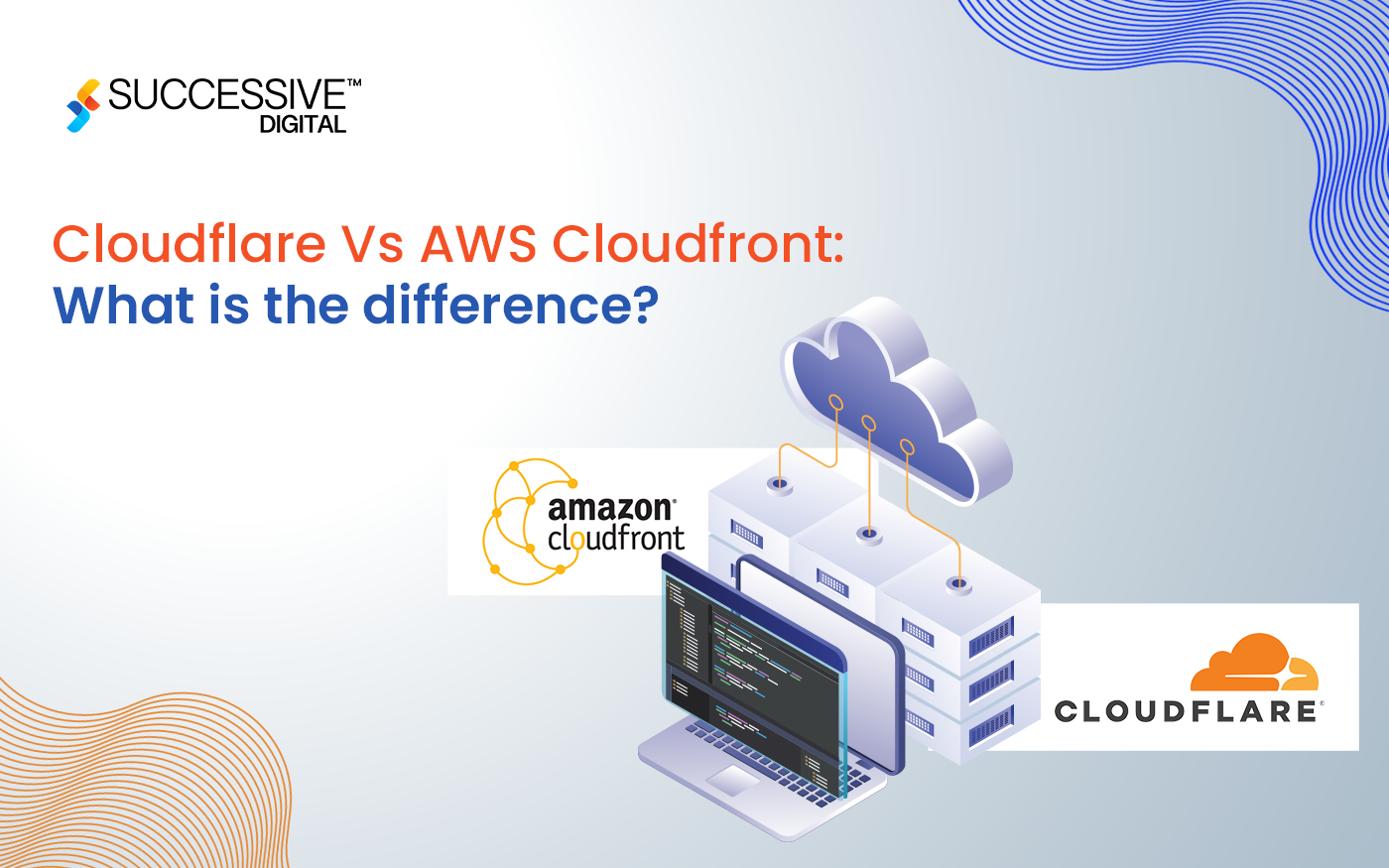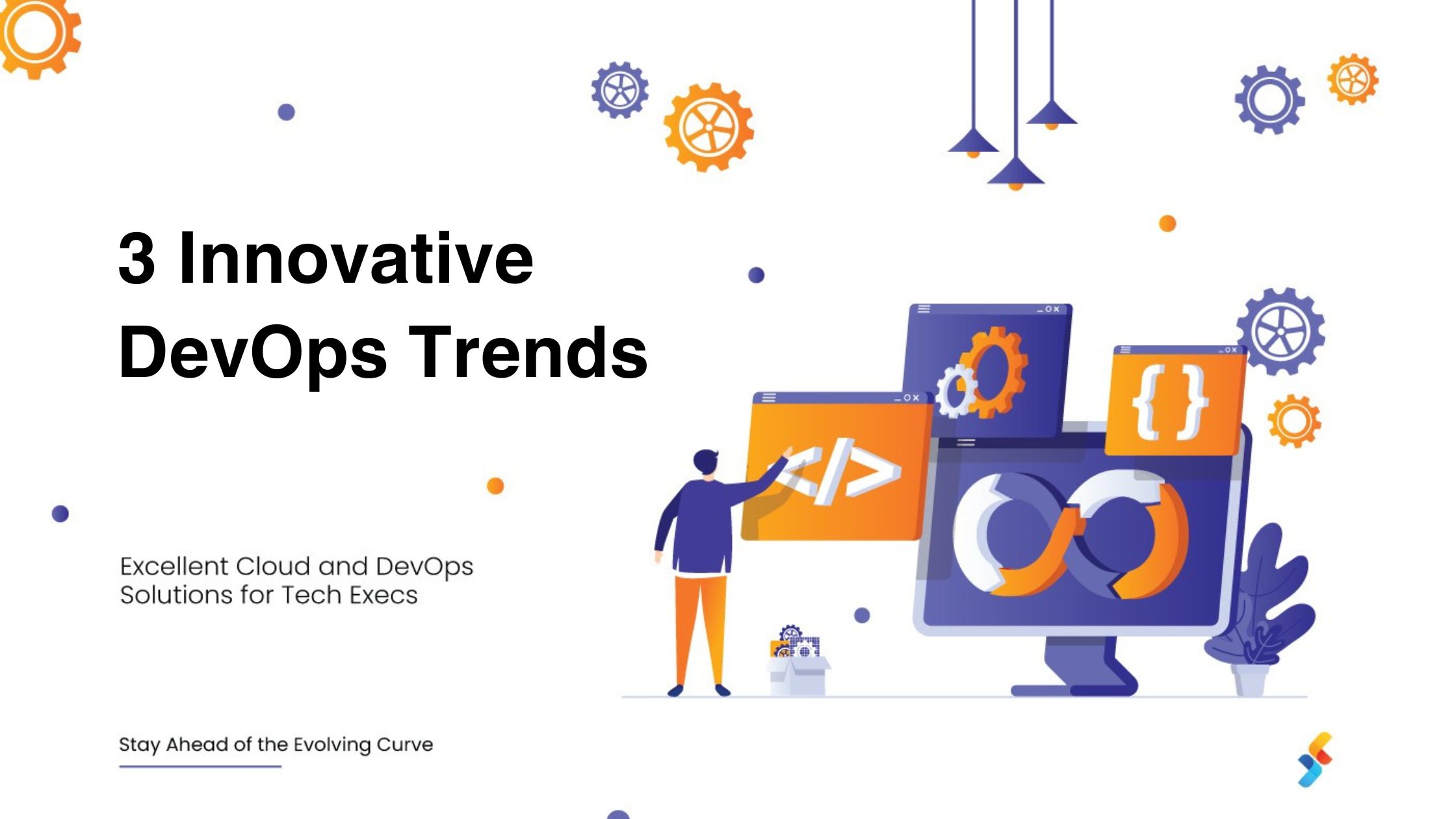Cloud has transformed how eCommerce businesses operate, promising greater speed, agility, and efficiency. But what feels like limitless space for storage has come with challenges. Many organizations struggle to adapt and effectively manage this modern resource, which operates very differently from the legacy systems it replaces.
IT departments are facing difficulty in cost control as they did with on-site data centers, while complex billing structures and the adoption of multiple cloud platforms aggravate wasteful cloud spending.
The stakes are high. Generative AI server infrastructure and operating costs alone are expected to surpass $76 billion by 2028, putting pressure on business models relying on cloud-driven services.
Meanwhile, inefficient cloud use and cybersecurity breaches are predicted to cost companies a staggering $650 billion by 2030, with downtime and breaches playing a significant role. By migrating to more resilient cloud architectures, businesses can cut downtime by 57% and reduce breach-related costs by 26%.
This blog explores why cloud cost management is critical for eCommerce businesses and provides ten best practices for optimizing cloud spend for online stores. From setting budgets to identifying unutilized resources, these insights will help you implement an effective cloud cost optimization strategy and maximize your cloud investments.
Understanding Cloud FinOps
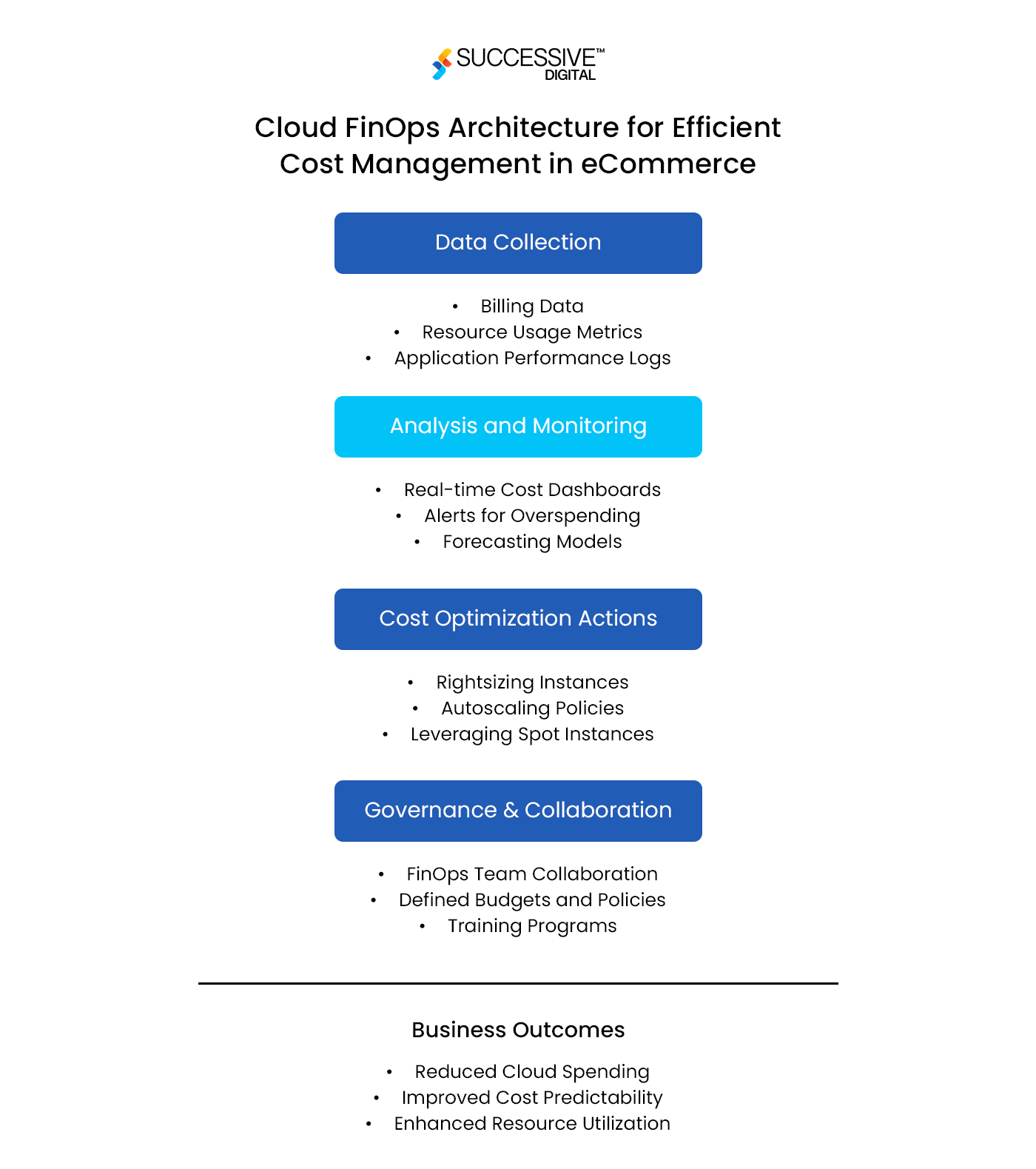
Cloud FinOps integrates financial management with operational efficiency to manage and optimize cloud costs, ensuring that cloud expenses support corporate goals. It helps businesses get the most out of their cloud investments by bringing together finance, engineering, and operations teams on the same page.
Cloud FinOps is rapidly growing among eCommerce enterprises. The global market size of cloud FinOps was estimated at USD 1.7 billion in 2023, which is predicted to grow at a CAGR of 14.7% between 2024 and 2032. This rapid growth is driven by the adoption of advanced technologies like Generative AI, which rely heavily on business intelligence and extensive data utilization.
FinOps goes beyond the basics of cloud cost management, emphasizing accounting for cloud
costs by function, business unit, and even down to developer or user levels. These spending and forecasts can be viewed through budgets, business projections, and past data.
More than 50% of enterprises expect to form strategic ties with cloud providers for GenAI platforms, developer tools, and infrastructure in order to ensure data and cost governance. Therefore, with an expert cloud consulting service provider as your partner, you can have visibility into the cloud costs and better align application and underlying resource usage with business KPIs for maximized cloud ROI.
What are the Benefits of Cloud Cost Management in eCommerce?
Organizations leveraging cloud cost optimization services can achieve transparency, allocate expenses accurately, and identify opportunities for cost savings, improving application productivity by 38% and infrastructure efficiency by 29%. (by McKinsey)
-
Ensure Resource Efficiency
In eCommerce, where demand fluctuates due to seasonal sales, promotions, or sudden traffic surges, resource efficiency ensures you scale up or down dynamically without unnecessary costs. This optimized approach not only conserves budget but also enhances the performance of customer-facing applications like online storefronts and checkout systems.
-
Reduce Expenditure
With the right cloud cost management practices, businesses can identify opportunities to reduce cloud costs in eCommerce. Minimizing overspending in eCommerce businesses allows them to reallocate budgets to growth-driven initiatives like marketing campaigns, inventory expansion, or technology upgrades, improving overall financial health.
-
Better Oversight and Transparency
One of the key challenges in cloud usage is understanding where the money is going, especially with decentralized consumption and multiple service providers. Cloud cost management tools provide detailed insights into usage patterns, billing, and cost allocation.
For eCommerce companies managing a variety of operations—from website hosting to payment processing and logistics tracking—this transparency ensures informed decision-making and accountability across teams.
-
Gain Budget Control and Predictability
Unpredictable expenses can disrupt an eCommerce company’s financial planning. Cloud cost management in eCommerce enables businesses to set budgets and monitor spending in real-time. Predictability in cloud costs makes it easier to forecast and plan for future growth, ensuring that your cloud investments align with business objectives without overstepping financial limits.
Get Started with Cloud Cost Optimization
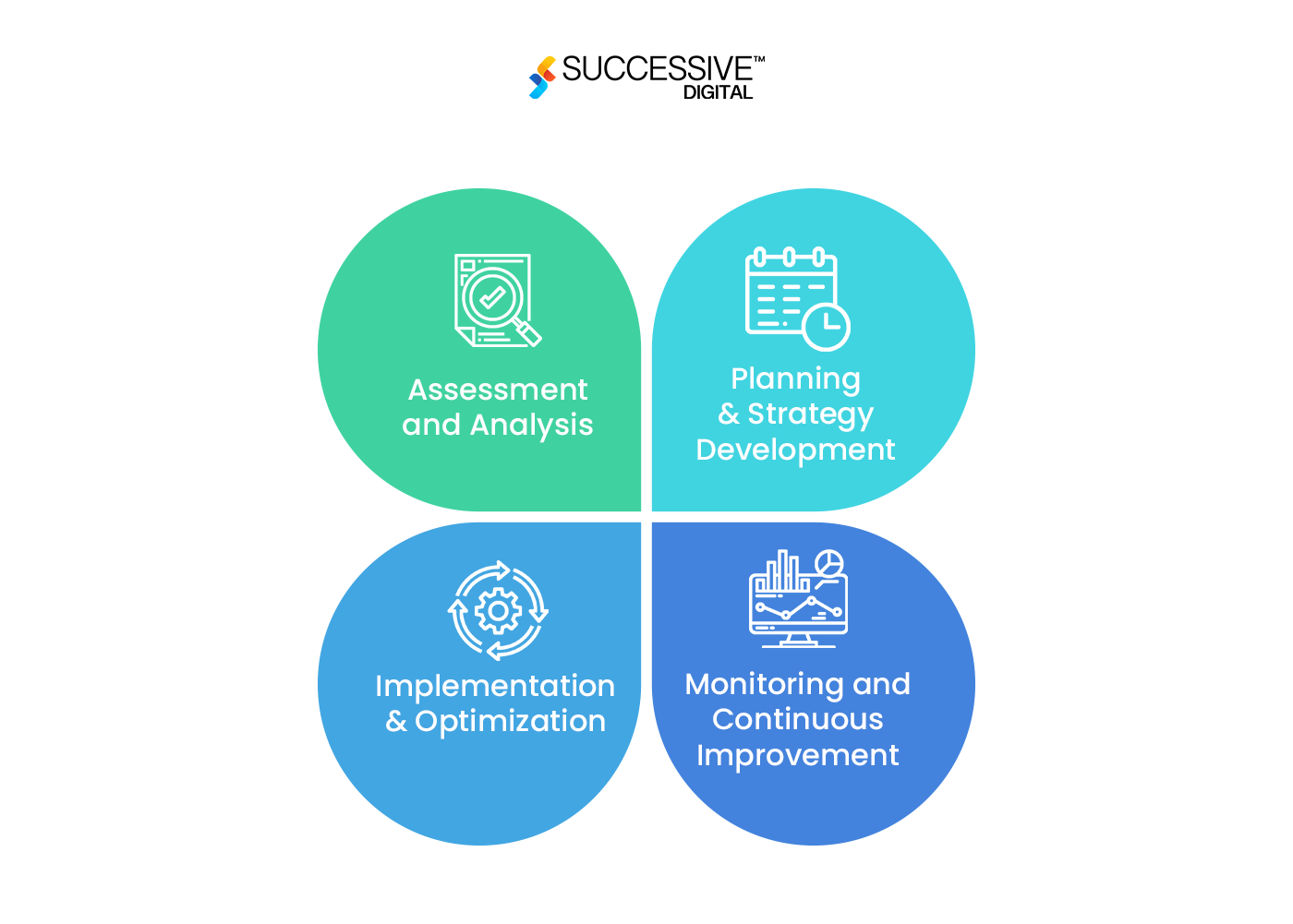
Cloud cost optimization for eCommerce is a proactive and constant process, which is essential for businesses looking to maintain profitability while scaling their operations. Leveraging Cloud FinOps solutions, businesses can integrate cloud financial management in eCommerce to strike the perfect balance between cost, performance, and growth.
Here’s how:
How to Optimize Cloud Costs in eCommerce with Cloud FinOps Solutions?
Understand Usage and Costs
Begin by gaining clarity on your cloud usage patterns and associated costs. Identify the services and resources that consume the most money and analyze their necessity. Understanding how different workloads impact your eCommerce operations can help prioritize optimization efforts.
Benchmark and Track Performance
Set benchmarks based on past cloud expenditures and measure them against performance metrics. This helps eCommerce businesses assess whether their cloud spending aligns with their business objectives. Tracking these metrics over time ensures continuous improvement and cost-efficiency.
Make Real-time Decisions
Adopting FinOps practices allows businesses to make data-driven decisions in real-time. For example, shutting down idle resources or dynamically adjusting workloads during peak shopping seasons ensures cost efficiency without compromising customer experience.
Optimize Cloud Rate and Usage
Negotiate rates with cloud providers, utilize volume discounts, and select the right pricing models (such as reserved or spot instances) for predictable workloads. Additionally, optimize usage by rightsizing resources and eliminating redundancies.
10 Best Practices for eCommerce Cloud Cost Optimization and Management
Define Budgets and Business Goals
Set clear financial boundaries and align them with your business objectives. Assign budgets for specific teams or projects, ensuring every expenditure contributes to your eCommerce growth strategy.
Eliminate Cloud Waste
Unused or idle resources contribute significantly to unnecessary spending. Perform regular audits to identify and eliminate redundant or underutilized services to keep your costs in check.
Automate Cloud Spend Optimization
Implement automation tools that manage tasks like shutting down unused instances, scaling resources automatically, and allocating costs accurately. This reduces manual intervention and ensures efficiency.
Cloud Spending Monitoring and Reporting
Adopt tools that offer real-time visibility into your eCommerce operations to optimize cloud spend for online stores. Dashboards and reports can help you monitor costs, track trends, and identify inefficiencies for more informed decision-making.
Leverage Spot Instances
Spot instances are an economical option for non-critical tasks, offering up to 90% savings compared to on-demand instances. They are ideal for batch processing, testing, or other workloads that tolerate interruptions.
Design Cloud-Native Applications
Building applications with cloud-native principles, such as serverless computing or microservices, ensures your infrastructure is optimized for the cloud. This approach minimizes operational overhead and improves scalability.
Limit Data Transfer Fees
Data transfer costs can escalate for high-traffic eCommerce platforms. Reduce cloud costs in eCommerce by keeping data within the same region, optimizing API calls, and utilizing CDNs.
Implement Autoscaling Solutions like Kubernetes
Autoscaling tools such as Kubernetes dynamically adjust resource allocations based on demand. This ensures that resources are used efficiently during traffic spikes without wasting capacity during off-peak times.
Rightsize Cloud Services
Analyze your infrastructure to ensure resources are appropriately sized for your needs. Upscale or downscale services as required to avoid overpaying for unused capacity or facing performance bottlenecks.
Manage, Organize, Communicate, and Educate
Create a well-structured framework for eCommerce cloud cost management. Organize resources logically, establish communication channels between teams, and educate employees on the importance of cost-effective cloud usage to promote a culture of accountability.
Future Trends and Innovations of Cloud FinOps in eCommerce
-
AI-Powered Cost Management
AI-driven tools can analyze usage patterns, predict spending trends, and recommend real-time optimizations. Businesses can ensure more precise and cost-efficient operations by automating repetitive tasks, such as shutting down idle resources or scaling infrastructure during peak periods.
-
Gen AI Cost Optimization
Generative AI is powering personalized shopping experiences and automating content creation. However, its intensive computational demands drive up cloud costs. Thus, advanced FinOps tools are emerging to monitor and manage these specific workloads.
-
Sustainability in Cloud Operations
With growing consumer demand for environmentally friendly practices, sustainability is now a key focus in cloud FinOps. Businesses are adopting energy-efficient cloud strategies and leveraging green data centers to align cost optimization with reduced carbon footprints. This trend enhances both cost efficiency and brand credibility.
-
Multi-Cloud Optimization
The adoption of multi-cloud strategies continues to rise, offering businesses flexibility and resilience. Future FinOps innovations will include better tools to manage costs across multiple cloud providers, offering unified billing, resource tracking, and cross-platform optimizations to avoid vendor lock-in while maximizing efficiency.
Cloud Cost Optimization Challenges in the eCommerce and Retail Industry
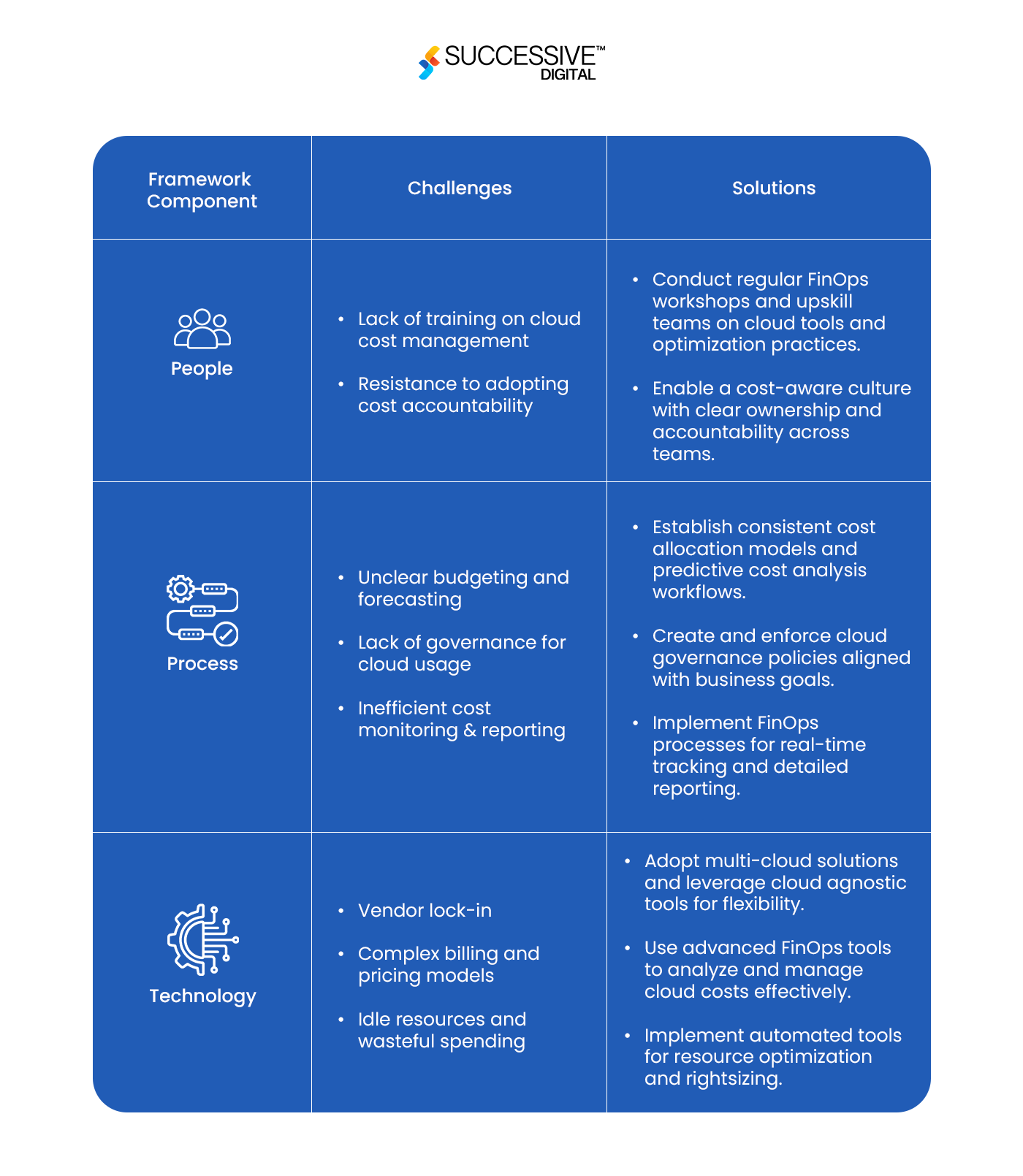
Unclear Budgeting and Forecasting
Many eCommerce businesses struggle to predict and allocate cloud budgets effectively due to fluctuating demands, seasonal spikes, and varying traffic patterns. Without a clear understanding of usage patterns and associated costs, businesses risk overspending or under-provisioning resources, leading to inefficiencies and missed opportunities.
Vendor Lock-In
Reliance on a single cloud provider can result in vendor lock-in, limiting flexibility and negotiation power. Transitioning workloads to another provider can involve significant migration costs, complexity, and downtime, leaving businesses unable to adapt to better pricing or more suitable solutions.
Multiple Cloud Services
With the increasing adoption of multi-cloud strategies, managing multiple cloud platforms becomes a logistical challenge. Each platform comes with its own pricing structures, tools, and interfaces, making it difficult to track and optimize spending across all services.
Complex Billing and Pricing Models
Cloud providers often use intricate pricing structures that vary based on instance types, regions, and usage patterns. This complexity makes it difficult for businesses to fully understand their cloud expenses, leading to surprise costs and inefficient spending.
Idle Resources
Unused or underutilized resources, such as idle virtual machines or unattached storage volumes, can quietly accumulate costs. Without regular audits or automation tools, businesses may continue to pay for resources that provide no value, significantly impacting the bottom line.
Lack of Governance
Inadequate governance frameworks around eCommerce cloud cost management can result in inefficient use of resources and uncoordinated spending. Without centralized policies and oversight, departments may independently procure cloud services, leading to fragmented and uncontrolled spending, also known as “shadow IT.”
Lack of Training on eCommerce Cloud Cost Management
Many organizations underestimate the importance of training their teams on cloud cost optimization techniques and tools. Without the necessary knowledge, employees may misconfigure services, fail to utilize cost-saving features, or neglect opportunities for optimization, contributing to unnecessary expenses.
Future-proof Your Cloud Financial Management in eCommerce with Successive Digital
With a proactive approach, eCommerce and retail enterprises can effectively utilize the cloud while keeping costs under control. Successive Digital is an innovation-intensive cloud consulting company offering FinOps solutions to eCommerce businesses that can turn cloud cost management into a strategic advantage. We implement advanced tools and practices to enable retailers to optimize cloud usage, enhance operational efficiency, and stay agile in a rapidly evolving market.
Want to leverage the full potential of your cloud services? Contact us today for cost-effective cloud transformation services.
Frequently Asked Questions
The role of cloud cost optimization is to ensure the cloud costs are aligned with the actual business needs while maintaining service quality and performance. It works by optimizing both software/ hardware licenses and on-premise or data center storage purchases, and at the same time, limiting the expenses, such as:
- Overprovisioned resources
- Unused instances
- Inefficient architecture
Several cloud cost optimization best practices need to be implemented in order to reduce and control cloud consumption, such as:
- Implementation of autoscaling using solutions like Kubernetes
- Select the best cloud storage solution
- Leverage spot instances
- Utilize a multi-cloud strategy
- Real-time monitoring and analytics
- Optimize cloud costs at every step of SDLC
Following are the best practices to follow for AWS cost optimization for eCommerce, such as:
- Right-size resources
- Using automation tools: AWS Cost Explorer, AWS Instance Scheduler, and AWS Operations Conductor
- Use cost-effective storage
- Monitor usage and define metrics and KPIs
- Manage demand and supply resources
- Optimize data transfer routes










